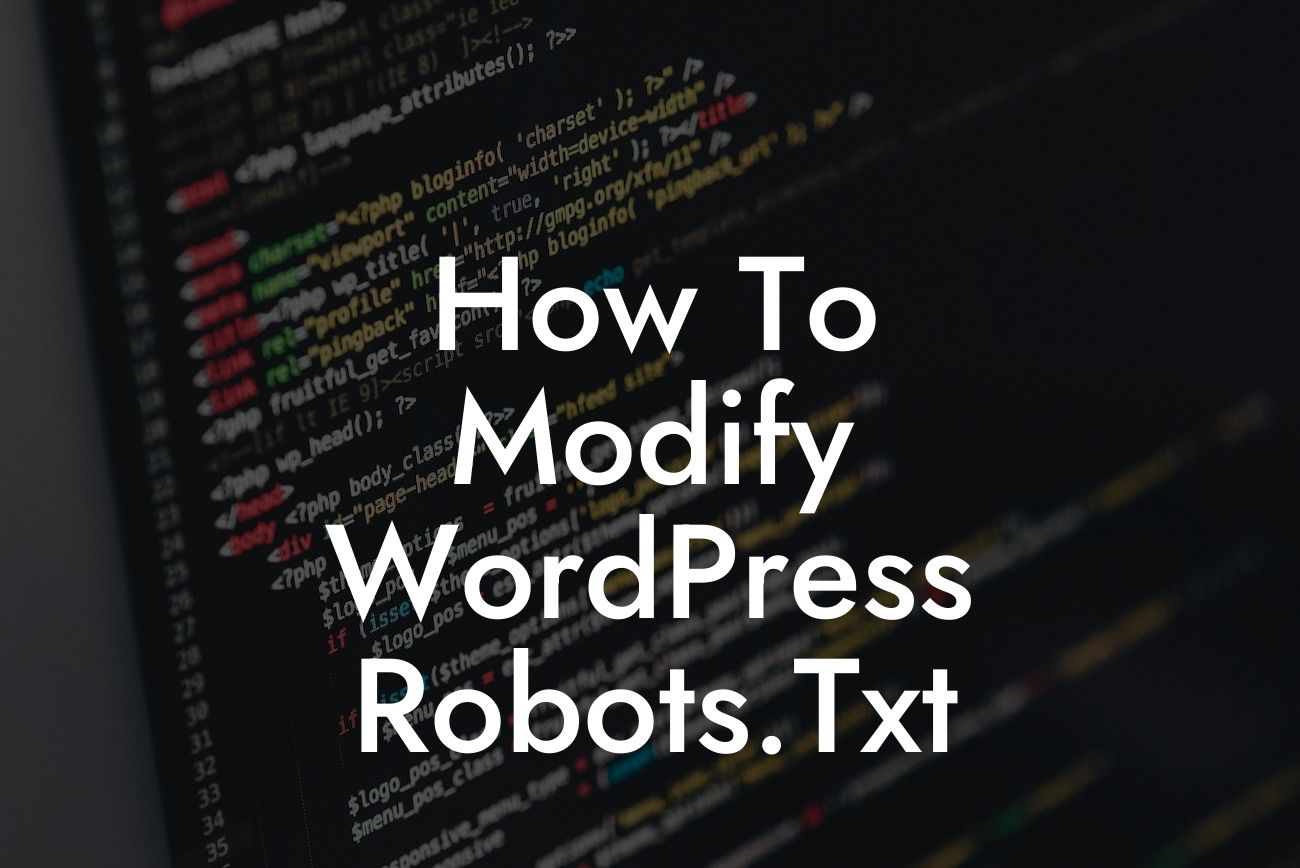Creating a website is one thing, but ensuring its visibility on search engines is an entirely different challenge. If you're a small business or entrepreneur looking to boost your online presence and attract more visitors, then optimizing your WordPress website's Robots.txt file is a crucial step. In this definitive guide, we will walk you through the process of modifying your Robots.txt file, unlocking the true potential of your website's search engine visibility. Prepare to take your online success to new heights with DamnWoo's exclusive range of WordPress plugins.
Engaging with search engines and guiding their crawling process is vital to enhance your website's visibility. The Robots.txt file plays a pivotal role in this aspect by instructing search engine crawlers which pages to index and which to exclude. Let's delve into the step-by-step process of modifying your WordPress Robots.txt file.
1. Understanding the Robots.txt File
The Robots.txt file is a plain text file present in the root directory of your website. Its primary function is to communicate with search engine bots, providing specific instructions for crawling and indexing. Familiarize yourself with this file and its significance in controlling your website's visibility and accessibility.
2. Identifying the Default WordPress Robots.txt File
Looking For a Custom QuickBook Integration?
WordPress generates a default Robots.txt file. However, it may not suit your unique requirements and goals. Locate this file within your WordPress installation and take note of its current contents.
3. Choosing the Correct User-Agent
To modify the Robots.txt file, it's crucial to understand the purpose and behavior of different User-Agents, including search engine bots. Each User-Agent may have different crawling patterns, so tailor your instructions accordingly.
4. Defining Allow and Disallow Instructions
Take advantage of the Allow and Disallow directives to specify which pages should be indexed or blocked from the search engine crawlers. Use appropriate wildcards or individual page URLs to create precise instructions.
5. Handling Sitemaps
Including a Sitemap link within your Robots.txt file aids search engine bots in discovering and indexing relevant pages. Leverage the power of XML Sitemaps to enhance your website's crawlability and user experience.
How To Modify Wordpress Robots.Txt Example:
Let's consider a realistic example to better understand the modifications you can make to your Robots.txt file. Suppose you have a WordPress website, and you want to prevent search engine bots from crawling a specific directory named "/private". In your Robots.txt file, you can add the following line:
User-agent: *
Disallow: /private/
Congratulations! You've successfully learned how to modify your WordPress Robots.txt file to optimize your website's search engine visibility. Remember, as a small business or entrepreneur, it's essential to stay ahead of the competition and embrace tailored solutions like DamnWoo's incredible WordPress plugins. Explore our range of plugins designed exclusively for small businesses, and witness the extraordinary growth and success that awaits you. Don't forget to share this article with others who may find it valuable, and continue exploring DamnWoo's comprehensive guides to unlock your website's full potential.













